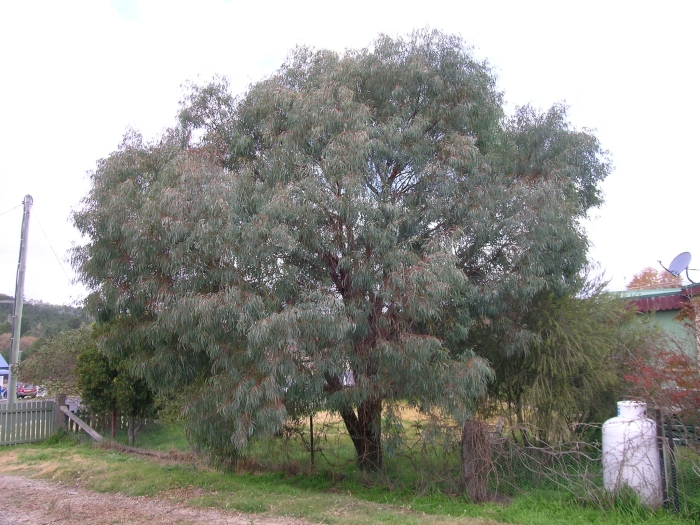Narrow-Leaved Black Peppermint
(Eucalyptus nicholii)
Narrow-Leaved Black Peppermint (Eucalyptus nicholii)
/
/

Harry Rose
CC BY 2.0
Image By:
Harry Rose
Recorded By:
Copyright:
CC BY 2.0
Copyright Notice:
Photo by: Harry Rose | License Type: CC BY 2.0 | License URL: https://creativecommons.org/licenses/by/2.0/ | Uploader: Macleay Grass Man | Publisher: Flickr |
















Estimated Native Range
Summary
Eucalyptus nicholii, commonly known as Narrow-leaved Black Peppermint or Willow Peppermint, is a deciduous tree native to the tablelands of New South Wales, Australia. It is adapted to dry, open woodlands and grassy woodland habitats. This species typically grows to a height of 15–18 m (49–59 ft) and is notable for its weeping habit, with a crown that often appears willow-like due to its narrow, pendulous leaves. The bark is thick, rough, and fibrous, covering both the trunk and branches. Adult leaves are small and narrow, providing a fine-textured appearance. Flower buds are arranged in groups of seven, leading to white flowers that are moderately showy. Flowering occurs from late summer to early autumn, followed by the production of small, hemispherical, bell-shaped or conical fruit.
Eucalyptus nicholii is highly valued for its ornamental qualities, including its attractive, dense foliage and its ability to provide light, dappled shade. It is widely planted in southeastern Australia and has become popular in urban landscapes, parks, and gardens worldwide. It is also used as a windbreak and for its essential oils. This tree is relatively low-maintenance, tolerating drought once established, and can thrive in full sun to part shade. It prefers soils with medium to fast drainage and can adapt to a range of soil types, though it does best in well-drained loams. While it is generally pest-resistant, it can be susceptible to psyllids and scale insects. Gardeners should be aware that the tree’s litter can be abundant, which may require additional cleanup efforts.CC BY-SA 4.0
Eucalyptus nicholii is highly valued for its ornamental qualities, including its attractive, dense foliage and its ability to provide light, dappled shade. It is widely planted in southeastern Australia and has become popular in urban landscapes, parks, and gardens worldwide. It is also used as a windbreak and for its essential oils. This tree is relatively low-maintenance, tolerating drought once established, and can thrive in full sun to part shade. It prefers soils with medium to fast drainage and can adapt to a range of soil types, though it does best in well-drained loams. While it is generally pest-resistant, it can be susceptible to psyllids and scale insects. Gardeners should be aware that the tree’s litter can be abundant, which may require additional cleanup efforts.CC BY-SA 4.0
Plant Description
- Plant Type: Tree
- Height: 40-50 feet
- Width: 15-40 feet
- Growth Rate: Moderate, Rapid
- Flower Color: White
- Flowering Season: Summer, Fall
- Leaf Retention: Evergreen
Growth Requirements
- Sun: Full Sun, Part Shade
- Water: Low, Medium
- Drainage: Medium, Fast
Common Uses
Bee Garden, Bird Garden, Butterfly Garden, Drought Tolerant, Fragrant, Hummingbird Garden
Natural Habitat
Tablelands of New South Wales, Australia, in dry, open woodlands and grassy woodlands
Other Names
Common Names: Willow Peppermint
Scientific Names: , Eucalyptus nicholii, Eucalyptus acaciiformis var. linearis,
GBIF Accepted Name: Eucalyptus nicholii Maiden & Blakely